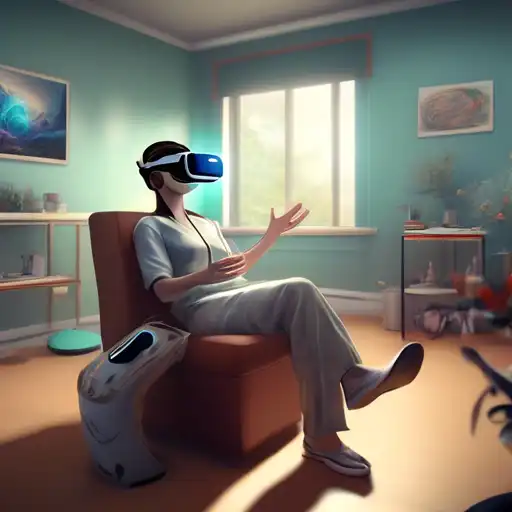The Transformative Role of Virtual Reality in Modern Therapy
Virtual Reality (VR) technology has transcended its initial entertainment purposes, emerging as a groundbreaking tool in the field of therapy. By creating immersive, controlled environments, VR offers unique therapeutic possibilities for a wide range of mental health conditions. This article explores the innovative ways VR is being utilized in therapy, highlighting its benefits and potential for future applications.
Understanding VR Therapy
VR therapy involves the use of virtual reality technology to simulate environments for therapeutic purposes. It allows individuals to confront and work through their issues in a safe, controlled setting. This method has been particularly effective in treating phobias, anxiety disorders, and PTSD, providing a novel approach to traditional therapy techniques.
Key Applications of VR in Therapy
The applications of VR in therapy are vast and varied. Below are some of the most significant uses:
- Exposure Therapy: VR enables patients to face their fears in a virtual environment, gradually reducing their anxiety over time.
- Pain Management: Through distraction and immersion, VR has been shown to reduce perceived pain levels in patients undergoing painful procedures.
- Social Skills Training: Individuals with social anxiety or autism spectrum disorders can practice social interactions in a virtual setting, building confidence and skills.
- Stress Reduction: VR environments designed for relaxation can help individuals manage stress and improve mental well-being.
The Benefits of VR Therapy
VR therapy offers several advantages over traditional methods, including:
- Enhanced engagement and motivation for patients.
- The ability to simulate scenarios that would be difficult or impossible to recreate in real life.
- Customizable environments tailored to individual therapeutic needs.
- Safe exposure to triggering situations without real-world risks.
Challenges and Considerations
Despite its potential, VR therapy faces challenges such as high costs, the need for specialized equipment, and limited accessibility. Additionally, the effectiveness of VR therapy can vary depending on the individual and the condition being treated.
The Future of VR in Therapy
As technology advances, the potential for VR in therapy continues to expand. Future developments may include more affordable and accessible VR solutions, as well as enhanced realism and interactivity in virtual environments. With ongoing research and innovation, VR therapy could become a standard tool in mental health treatment.
For those interested in exploring the intersection of technology and mental health further, consider reading about the impact of technology on mental health.
In conclusion, VR represents a promising frontier in therapy, offering innovative solutions to traditional treatment challenges. Its ability to create immersive, tailored experiences holds the potential to revolutionize mental health care, making therapy more effective and accessible for individuals worldwide.
